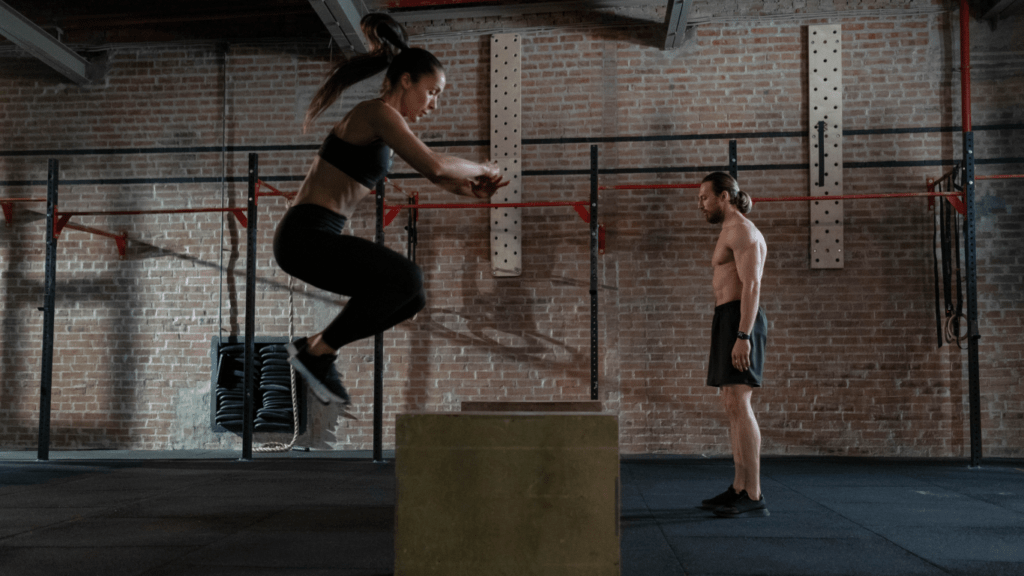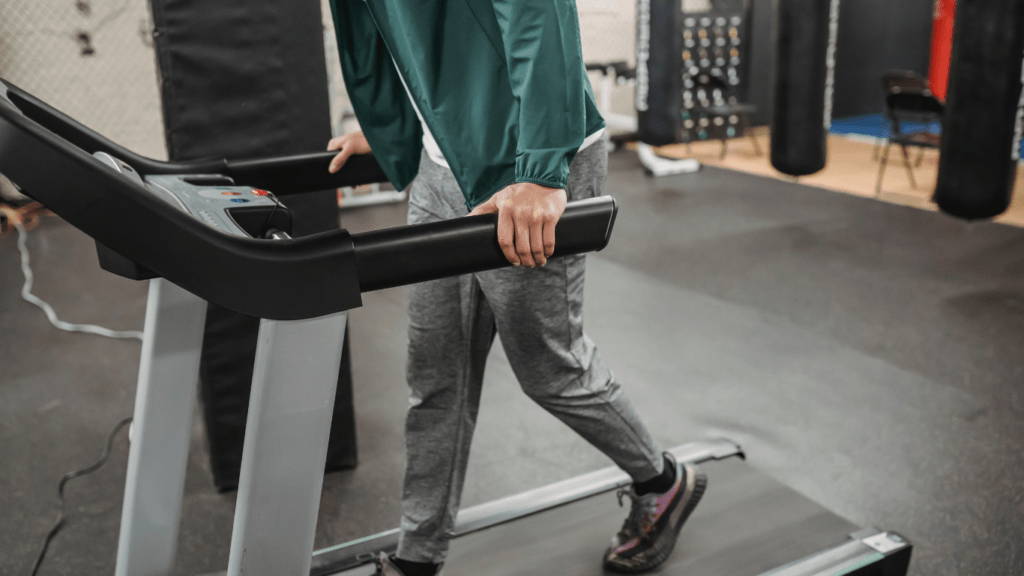Are you looking to take your athletic performance to the next level? Plyometrics might just be the key to unlocking your full potential. In this article, I’ll delve into the world of plyometric training and how it can enhance your power and agility on the field, court, or track.
Plyometrics, often referred to as jump training, focuses on explosive movements that can help improve your speed, strength, and overall athletic performance. Whether you’re a seasoned athlete or just starting your fitness journey, incorporating plyometric exercises into your routine can make a significant difference in your abilities.
Join me as we explore the benefits of plyometrics, the science behind its effectiveness, and some key exercises to incorporate into your training regimen. Get ready to elevate your game and unleash your full athletic potential with the power of plyometrics.
Understanding Plyometrics Training
Plyometrics training focuses on quick, powerful movements to enhance athletic performance, specifically targeting power and agility in athletes. These exercises are designed to improve muscle strength, speed, and explosiveness through dynamic movements like jumping and bounding.
Plyometric training is a valuable tool for athletes looking to boost their performance on the field or in their respective sports. When incorporating plyometrics into a training regimen, it’s essential to understand the principles behind this type of exercise.
Plyometric movements involve a rapid stretch of the muscle (eccentric phase) immediately followed by a rapid contraction (concentric phase). This quick transition from lengthening to shortening helps improve the stretch-shortening cycle of muscles, leading to enhanced power production.
By engaging in plyometric exercises, athletes can enhance their neuromuscular efficiency, which plays a vital role in improving explosiveness and agility. These drills train the nervous system to recruit muscle fibers more effectively, allowing for quicker and more powerful movements during athletic activities.
Incorporating plyometrics into training routines can lead to significant improvements in speed, agility, and overall athletic performance. Athletes should approach plyometrics training with caution, ensuring proper technique and progression to minimize the risk of injury.
It’s crucial to start with basic exercises and gradually increase intensity and difficulty as strength and proficiency improve. Consulting with a qualified coach or trainer can help athletes design a plyometric program tailored to their specific needs and goals.
To maximize the benefits of plyometrics training, consistency is key. Regularly including plyometric exercises in a training regimen can lead to noticeable improvements in power, speed, and agility over time.
Athletes should complement plyometrics with other strength and conditioning exercises to achieve a well-rounded fitness routine that supports their performance goals effectively.
Benefits of Plyometrics for Power and Agility
Plyometrics offer a range of benefits that can significantly enhance athletic performance, particularly in terms of power and agility.
Improved Explosiveness
Including plyometric training in your regimen can boost explosiveness by focusing on quick and powerful movements. These exercises help improve the stretch-shortening cycle of muscles, leading to enhanced power production.
For example, incorporating depth jumps or bounding drills can train your muscles to generate more force in less time, translating to quicker and more explosive movements on the field or court.
Increased Speed and Agility
Engaging in plyometric exercises can also result in increased speed and agility. By targeting fast-twitch muscle fibers through activities like box jumps or ladder drills, athletes can enhance their ability to accelerate and change directions swiftly.
This improved speed and agility are crucial in sports that require quick bursts of movement and rapid changes in direction, giving athletes a competitive edge on the playing field.
Key Plyometric Exercises
Depth Jumps
Depth jumps are a fundamental plyometric exercise aimed at enhancing explosive power and agility. This exercise involves stepping off a box or platform and immediately jumping up upon landing.
It focuses on improving the stretch-shortening cycle of muscles by rapidly transitioning from an eccentric to a concentric contraction. Depth jumps are beneficial for athletes looking to boost their vertical jump height and reactive strength.
Plyometric Progression Tips
- Prioritize Safety: Begin with proper warm-ups and gradually increase intensity to reduce the risk of injury during plyometric training.
-
Focus on Technique: Ensure correct form and landing mechanics in each exercise to maximize effectiveness and improve overall performance in power and agility.
Structured Progression:
I recommend starting with foundational exercises like squat jumps, alternating leg bounding, and lateral jumps before advancing to more complex movements. Progress gradually by increasing intensity, height, or distance to challenge your muscles and neuromuscular system progressively.
Focus on Quality:
In my experience, it’s crucial to prioritize proper form and technique over quantity. Ensure explosive movements are executed with precision to maximize power output and minimize the risk of injuries.
Emphasize a quick transition between the eccentric and concentric phases for optimal results.
Adequate Recovery:
Rest and recovery are key components of any training program. I suggest allowing ample time between plyometric sessions to allow your muscles to repair and adapt to the demands placed on them.
Overtraining can lead to fatigue and decreased performance, so listen to your body’s signals.
Variety in Training:
To keep your workouts engaging and challenging, incorporate a variety of plyometric exercises targeting different muscle groups and movement patterns. Mix in exercises like tuck jumps, depth jumps, and lateral cone hops to enhance overall power, speed, and agility.
Consult a Professional:
If you’re new to plyometrics or looking to fine-tune your training program, seeking guidance from a certified coach or experienced trainer can provide valuable insights. A professional can assess your current abilities, set realistic goals, and design a personalized plyometric routine tailored to your needs.
Monitor Progress:
Tracking your progress is essential for evaluating the effectiveness of your plyometric training. Keep a training log to record sets, reps, heights, and distances covered in each session. Regularly reassess your performance to identify areas of improvement and adjust your workouts accordingly.
By following these plyometric progression tips, you can optimize your training regimen, enhance your power and agility, and elevate your athletic performance to new heights. Consistent practice, proper technique, and smart progression are key to unlocking your full potential in plyometrics.
Implementing Plyometrics in Your Training Program
Exploring plyometric training as a tool to boost athletic performance and enhance power and agility is an exciting journey. To incorporate plyometrics effectively into your training program, it’s essential to focus on structured progression, adherence to proper technique, and adequate recovery intervals between sessions.
Starting with foundational exercises is crucial when integrating plyometrics into your routine. Begin with basic movements like squat jumps and standing long jumps to build a solid foundation of explosive power while ensuring correct form and body mechanics to prevent injuries.
As you progress, gradually increase the intensity of your plyometric exercises. Incorporate more advanced drills such as depth jumps and bounding exercises to challenge your muscles and improve the stretch-shortening cycle, which enhances power production and agility.
Emphasizing proper form and technique throughout your plyometric training sessions is key to maximizing results and reducing the risk of injuries. Pay close attention to landing mechanics, ensuring you land softly and absorb shock efficiently to protect your joints and muscles.
Allowing ample recovery time between plyometric sessions is crucial for optimal performance and injury prevention. Aim for at least 48 hours of rest between intense plyometric workouts to allow your muscles to recover and adapt to the increased demands placed on them.
Consulting a fitness professional or coach with experience in plyometric training can provide valuable guidance and personalized program design tailored to your specific goals and fitness level. They can help monitor your progress, adjust exercises as needed, and ensure you’re on the right track to achieve your desired outcomes.
Keeping a detailed training log to track your plyometric workouts, progress, and any modifications made along the way can help you stay accountable, identify patterns of improvement, and make adjustments to optimize your training program further.
By following these tips and gradually incorporating plyometrics into your training regimen with a focus on technique, progression, recovery, and expert guidance, you can harness the benefits of plyometric training to enhance your power, agility, and overall athletic performance effectively.


